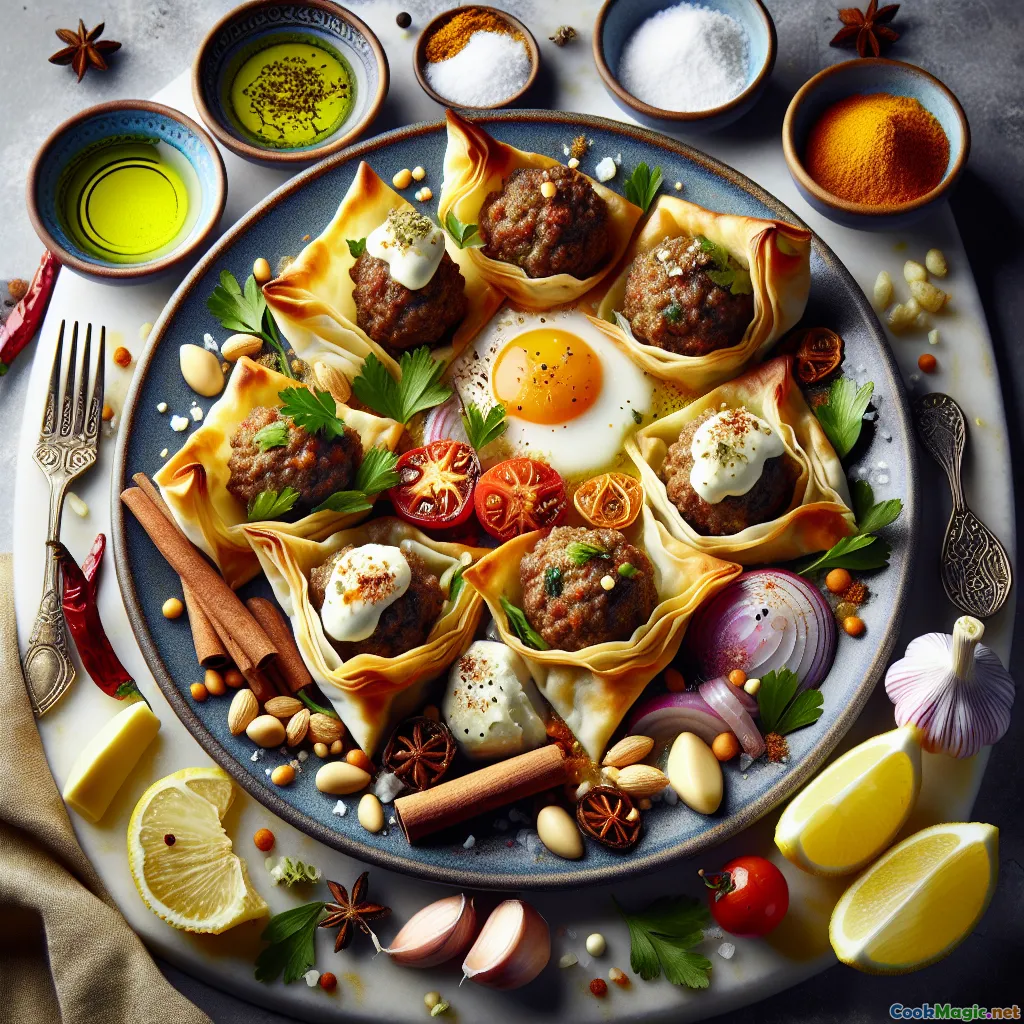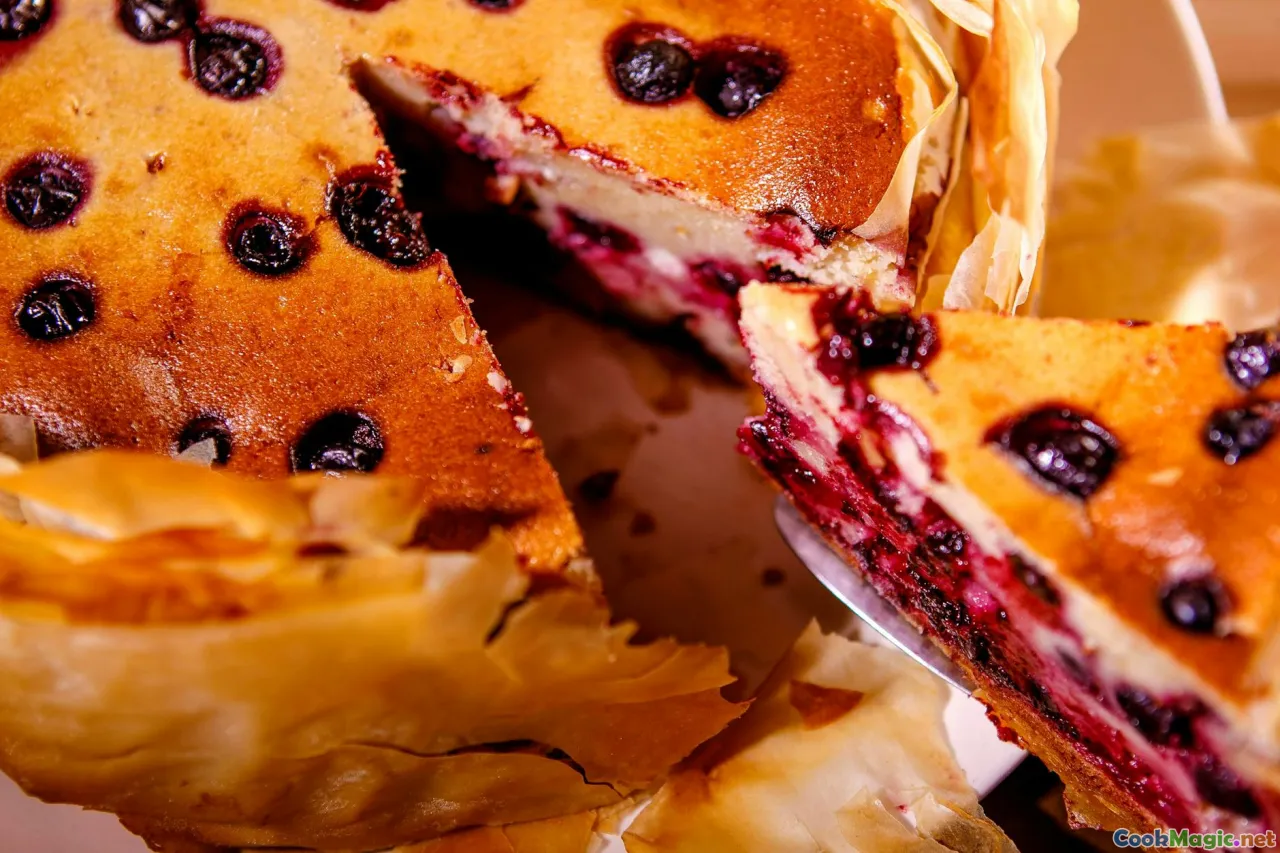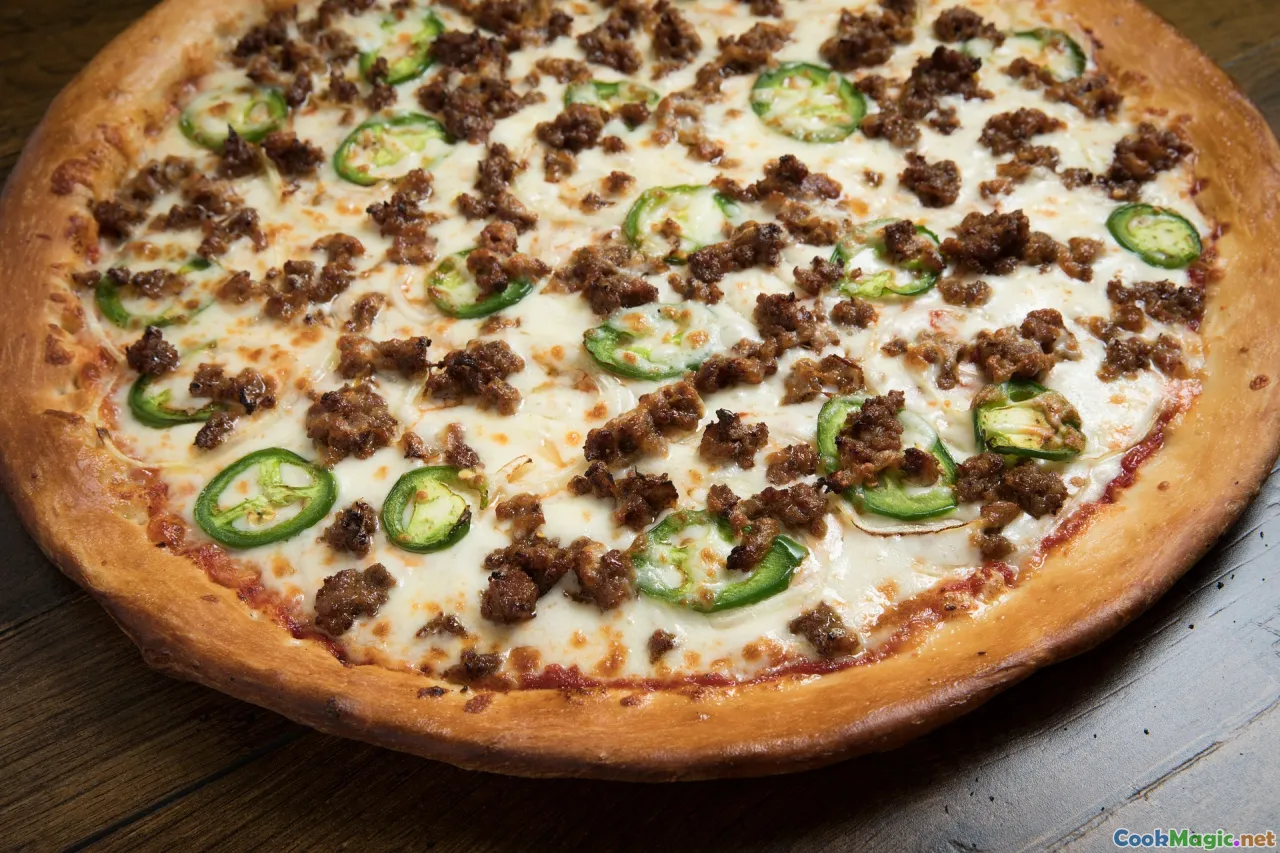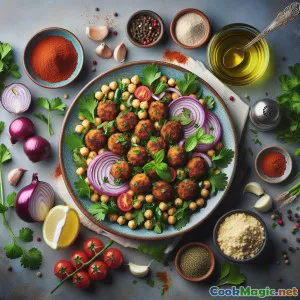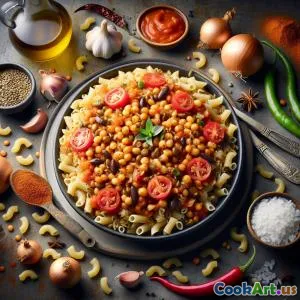
Paquets Areesh à la viande de chameau hachée et feuilles de phyllo épicées
(Camel Mince Areesh Parcels with Spiced Phyllo)
(0 Avis)0
361
octobre 16, 2025
Signaler un problème
Ingrédients
-
400 grams Viande de chameau hachée
(Substitute ground beef or lamb if camel is unavailable.)
-
150 grams Fromage Areesh
(Soft Egyptian cheese; sub ricotta with a pinch of salt.)
-
1 medium Oignon jaune
(About 150g, finely diced.)
-
2 tbsp Huile d'olive
(For sautéing aromatics.)
-
3 cloves Ail
(Finement haché.)
-
2 tsp Mélange d'épices Baharat
(Use ras el hanout if preferred.)
-
1 tsp Cumin moulu
(Enhances the earthiness of camel.)
-
1 tsp Coriandre moulu
(Adds citrusy warmth.)
-
0.25 tsp Cannelle en poudre
(Subtle sweetness to round the spices.)
-
0.5 tsp Flocons de piment rouge
(Adjust to heat preference.)
-
2 tbsp Persil frais
(Finement haché.)
-
1 tbsp Menthe fraîche
(Finement haché.)
-
30 grams Pignons grillés
(Adds crunch; sub slivered almonds.)
-
1 tsp Zeste de citron
(Brightens the filling.)
-
8 sheets Feuilles de pâte filo
(Keep covered to prevent drying out.)
-
60 grams Ghee (beurre clarifié), fondu
(Sub unsalted butter or neutral oil.)
-
1 large Œuf
(Beaten for egg wash.)
-
2 tsp graines de nigelle ou graines de sésame
(For aromatic topping.)
-
1 tsp Sel
(Kosher salt preferred.)
-
0.5 tsp Poivre noir
(Fraîchement moulu)
-
120 grams Yaourt nature
(Optional dipping sauce base.)
-
1 tbsp Sirop de dattes
(Balances savoriness; sub honey.)
-
1 tbsp Jus de citron
(Freshly squeezed for the dip.)
-
1 clove Ail (pour trempette)
(Small clove; finely grated.)
-
0.25 tsp Sel fin (pour tremper)
(Season to taste.)
(Substitute ground beef or lamb if camel is unavailable.)
(Soft Egyptian cheese; sub ricotta with a pinch of salt.)
(About 150g, finely diced.)
(For sautéing aromatics.)
(Finement haché.)
(Use ras el hanout if preferred.)
(Enhances the earthiness of camel.)
(Adds citrusy warmth.)
(Subtle sweetness to round the spices.)
(Adjust to heat preference.)
(Finement haché.)
(Finement haché.)
(Adds crunch; sub slivered almonds.)
(Brightens the filling.)
(Keep covered to prevent drying out.)
(Sub unsalted butter or neutral oil.)
(Beaten for egg wash.)
(For aromatic topping.)
(Kosher salt preferred.)
(Fraîchement moulu)
(Optional dipping sauce base.)
(Balances savoriness; sub honey.)
(Freshly squeezed for the dip.)
(Small clove; finely grated.)
(Season to taste.)
Nutrition
- Portions: 4
- Taille de portion: 2 parcels (180g)
- Calories: 620 kcal
- Carbohydrates: 0 g
- Protein: 31 g
- Fat: 38 g
- Fiber: 3 g
- Sugar: 4 g
- Sodium: 750 mg
- Cholesterol: 115 mg
- Calcium: 220 mg
- Iron: 5.5 mg
Instructions
-
1 - Sweat the Aromatics:
Warm olive oil in a skillet over medium heat. Add diced onion and a pinch of salt; cook until translucent, 4–5 minutes. Stir in minced garlic for 30–60 seconds.
-
2 - Brown the camel mince:
Add camel mince to the skillet. Cook, breaking it up, until no longer pink and moisture evaporates slightly, 5–7 minutes.
-
3 - Season and enrich:
Stir in baharat, cumin, coriander, cinnamon, chili flakes, black pepper, and remaining salt. Fold in parsley, mint, lemon zest, and pine nuts. Remove from heat; cool 5 minutes, then gently fold in crumbled Areesh.
-
4 - Cool The Filling:
Spread the filling on a plate to cool quickly. Cool to just warm so it won’t tear the phyllo or melt excessively.
-
5 - Prep the phyllo:
Heat oven to 200°C (392°F). Line a baking sheet. Keep phyllo covered with a barely damp towel. Melt ghee and keep a pastry brush ready.
-
6 - Assemble Parcels:
Lay one phyllo sheet, brush lightly with ghee, top with a second sheet. Cut into 4 equal strips. Spoon 2–3 tbsp filling at one end of each strip and fold into triangles or envelopes, keeping edges neat.
-
7 - Finish and bake:
Arrange parcels on the tray. Brush with beaten egg, sprinkle nigella or sesame seeds. Bake 16–20 minutes until deep golden and crisp.
-
8 - Make the yogurt–date dip (optional):
Mix yogurt, date syrup, lemon juice, grated garlic, and a pinch of salt until smooth. Chill until serving.
-
9 - Serve:
Rest parcels 3 minutes to set. Serve hot with the yogurt–date dip and extra herbs if desired.
Warm olive oil in a skillet over medium heat. Add diced onion and a pinch of salt; cook until translucent, 4–5 minutes. Stir in minced garlic for 30–60 seconds.
Add camel mince to the skillet. Cook, breaking it up, until no longer pink and moisture evaporates slightly, 5–7 minutes.
Stir in baharat, cumin, coriander, cinnamon, chili flakes, black pepper, and remaining salt. Fold in parsley, mint, lemon zest, and pine nuts. Remove from heat; cool 5 minutes, then gently fold in crumbled Areesh.
Spread the filling on a plate to cool quickly. Cool to just warm so it won’t tear the phyllo or melt excessively.
Heat oven to 200°C (392°F). Line a baking sheet. Keep phyllo covered with a barely damp towel. Melt ghee and keep a pastry brush ready.
Lay one phyllo sheet, brush lightly with ghee, top with a second sheet. Cut into 4 equal strips. Spoon 2–3 tbsp filling at one end of each strip and fold into triangles or envelopes, keeping edges neat.
Arrange parcels on the tray. Brush with beaten egg, sprinkle nigella or sesame seeds. Bake 16–20 minutes until deep golden and crisp.
Mix yogurt, date syrup, lemon juice, grated garlic, and a pinch of salt until smooth. Chill until serving.
Rest parcels 3 minutes to set. Serve hot with the yogurt–date dip and extra herbs if desired.
En savoir plus sur: Paquets Areesh à la viande de chameau hachée et feuilles de phyllo épicées
Why these parcels are special
Camel Mince Areesh Parcels bring together two ingredients with deep regional roots—camel meat and Areesh cheese—inside the universal comfort of crisp, buttery phyllo. The result is a hand-held, golden appetizer that’s aromatic with baharat, dotted with herbs, and enriched by the gentle creaminess of fresh cheese.
Camel meat is lean, robust, and earthy; it stands up beautifully to warm spices like cumin and coriander. Areesh, an Egyptian soft cheese traditionally made from cultured milk (often from cow or buffalo, though camel milk cheeses exist across the region), adds a gentle tang and moisture that keeps the filling luscious without being greasy. It’s a thoughtful pairing that balances nutrition with indulgence.
Flavor blueprint
- Warmth: Baharat, cumin, coriander, and a whisper of cinnamon create a layered spice profile that feels cozy rather than hot.
- Brightness: Lemon zest and fresh herbs lift the richness of the mince and ghee.
- Texture: Toasted pine nuts provide crunch; Areesh offers tender creaminess; phyllo shatters into delicate flakes.
Technique notes for success
- Keep phyllo supple: Phyllo dries quickly. Keep it under a barely damp towel and brush lightly with melted ghee—too much fat can make parcels heavy and soggy.
- Cool the filling: Folding Areesh into a warm (not hot) mixture prevents it from melting out and helps maintain the parcels’ structure.
- Fold neatly: Triangle folds trap the filling at multiple layers, reducing leaks and creating attractive edges. Press seams gently as you go.
- Bake hot: A 200°C oven ensures rapid steam formation for crisp layers without over-drying the filling.
Ingredient swaps and sourcing
- Camel mince: If unavailable, ground lamb or beef works well. Choose 80–90% lean to mimic camel’s lean profile.
- Areesh cheese: Ricotta with a pinch of salt is a good stand-in. For a saltier bite, mix half ricotta with a little feta.
- Spice blend: Baharat varies by maker—some sweeter, some smokier. Ras el hanout or a homemade blend (paprika, allspice, black pepper, coriander, cumin) also pairs nicely.
- Nuts and seeds: Pine nuts are classic but pricey; toasted slivered almonds or pistachios are excellent alternates. Nigella seeds add a signature Egyptian aroma on top.
Serving ideas
These parcels shine on mezze platters alongside pickled turnips, olives, and a simple tomato–cucumber salad. The optional yogurt–date dip brings sweet-tart contrast that flatters the spices and echoes the region’s love of dates. For a more substantial meal, serve with lentil soup or a herbed bulgur pilaf.
Cultural threads
Areesh is tied closely to Egyptian dairy traditions, especially in rural areas where laban rayeb (naturally fermented milk) is transformed into soft, fresh cheese. Phyllo-based pastries, while associated broadly with the Eastern Mediterranean and the Levant, are enjoyed across Egypt’s bakeries and home kitchens. Camel meat, common in parts of North Africa and the Arabian Peninsula, is celebrated during festive occasions and appreciated for its leanness. This recipe respectfully weaves those threads: Egyptian cheese, regional spice logic, and a pastry technique that has traveled and evolved across centuries.
Make-ahead, freezing, and storage
- Make-ahead: Assemble parcels up to 24 hours in advance, refrigerate tightly covered, then bake from cold, adding 2–3 minutes to the time.
- Freeze: Freeze assembled, unbaked parcels on a tray, then transfer to a bag for up to 2 months. Bake from frozen at 200°C for 20–24 minutes.
- Leftovers: Re-crisp in a 180°C oven for 8–10 minutes. Avoid microwaving; it softens the phyllo.
Troubleshooting
- Soggy bottoms: Filling too wet or oven too cool. Ensure the mince is cooked off and cooled; bake on a preheated tray.
- Tearing phyllo: Work swiftly, keep covered, and patch tears with a small brushed phyllo scrap.
- Leaky parcels: Overfilling or loose folds. Use 2–3 tablespoons of filling and press seams gently.
Nutrition and balance
Camel’s lean profile gives high-quality protein with moderate fat. Areesh contributes calcium and moisture, while phyllo and ghee add satisfying crispness. A side salad and yogurt-based dip bring freshness and probiotics for balance.
Personal note
I love how the mild tang of Areesh mellows camel’s depth, creating a filling that’s both comforting and bright. The first bite—crackling layers yielding to a fragrant, juicy center—captures the magic of the region’s pantry: humble ingredients, smart technique, and generous hospitality.
